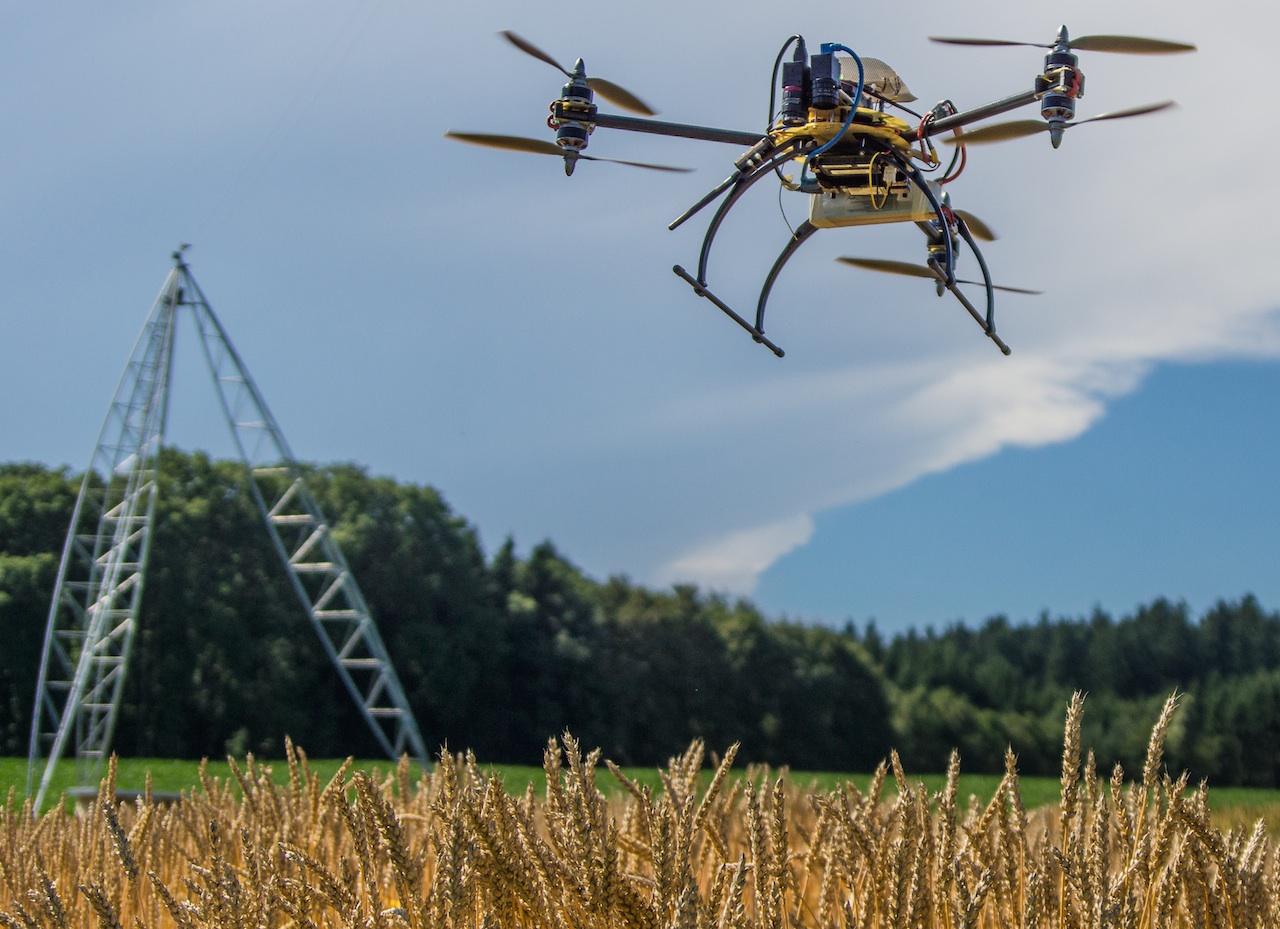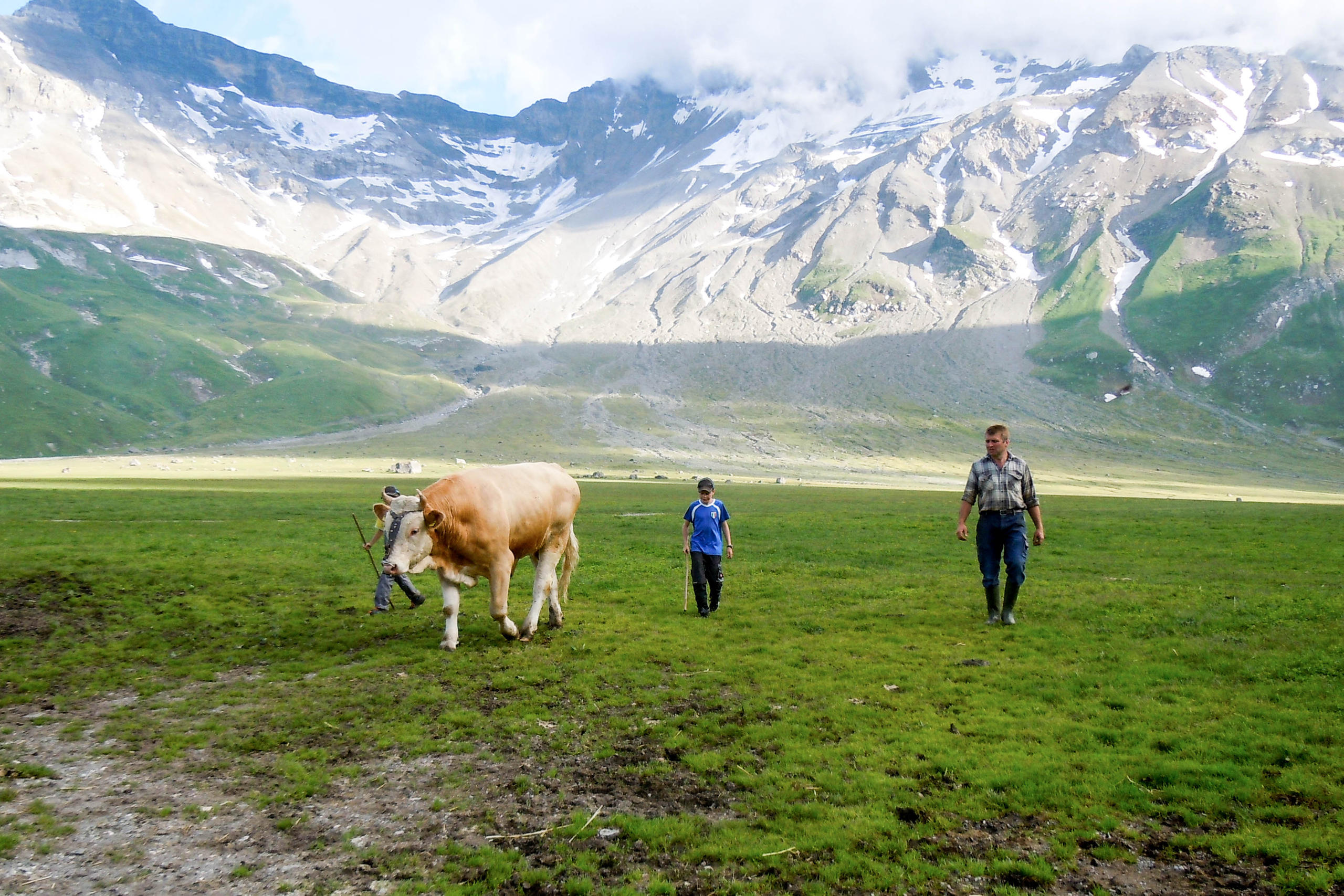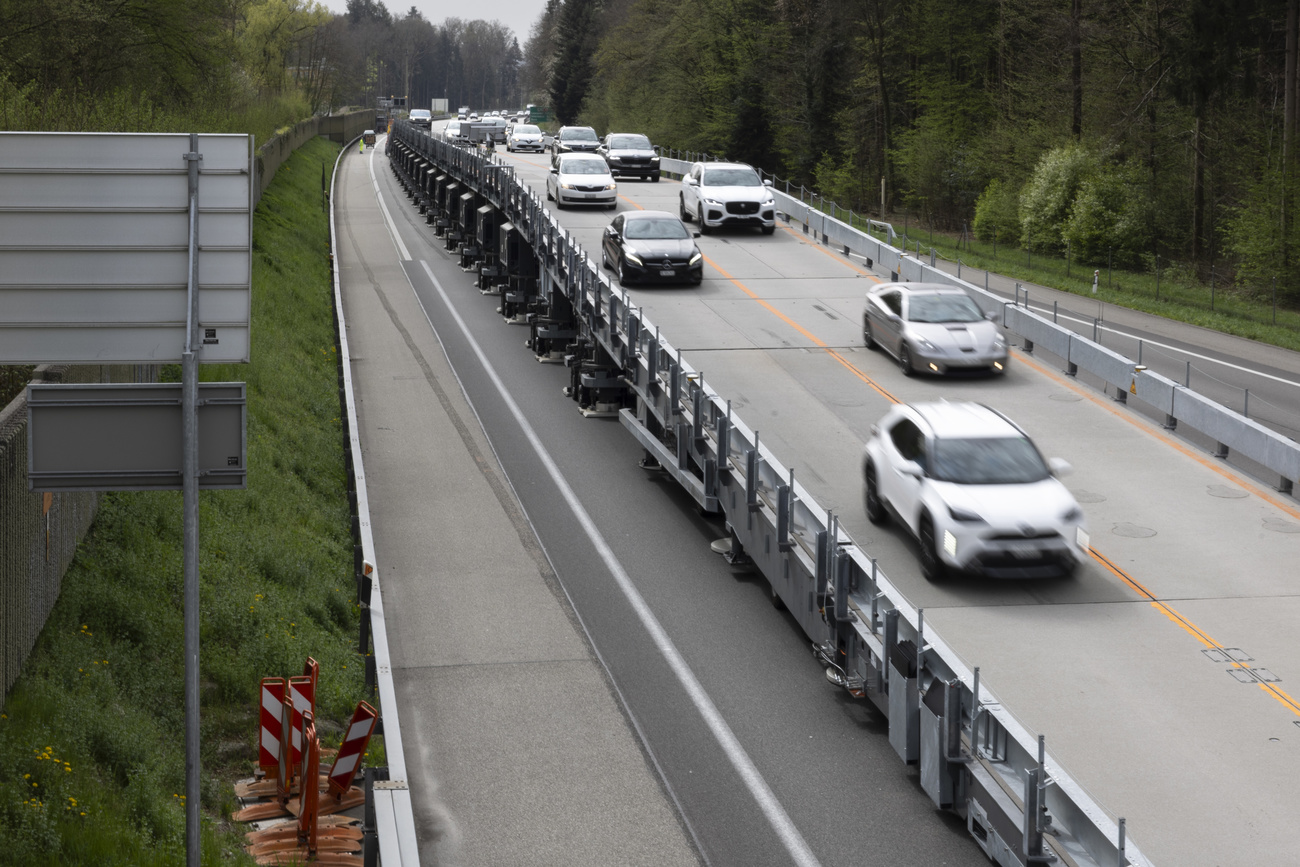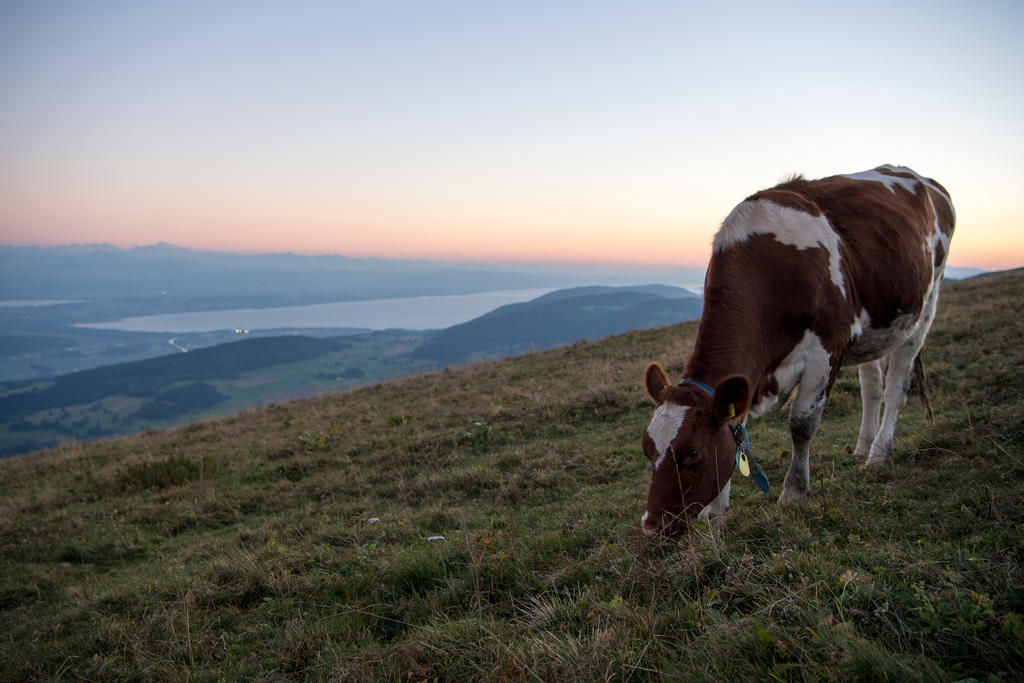The rise of the machines: robots and the future of farming

Drones, milking robots, driverless vehicles, intelligent sensors, bio-surveillance, data-sharing – the Swiss economics ministry is calling for farmers to embrace a “digital revolution”, marking a turning point in agricultural practices that is not without risk.
Far from being science-fiction, modern tools which enable precision farming are already indispensable in delivering greater efficiencies and boosting productivity.
Switzerland is at the heart of developments which have seen dronesExternal link equipped with cameras capable of detecting disease or estimating the precise nutritional needs of large-scale crops, hydroponic lettuce External linkgrown in a soil-free environment fed by a cloud of 100% organic nutrients, or solar-powered robotsExternal link that can target individual weeds and reduce pesticide use.
As spectacular as they are, these innovations – all developed in Switzerland – are just the start of the technological and digital transformation that is shaking up agriculture across the globe.
“The real revolution is playing out around the harvesting of crops and the management of agricultural data,” says Francis Egger, member of the secretariat of the powerful Swiss Farmer’s AssociationExternal link. “And I’m not talking about something far away on the horizon, but of a change which will happen within the year and which will impact Switzerland.”
Less paperwork
Cédric RomonExternal link owns an agricultural business in the Lausanne region. Today we find him seated comfortably in the air-conditioned cabin of his combine harvester, which is equipped with an automatic guidance system, and from where, each day, he gathers large amounts of data about the crop he is harvesting.
“[The data means that] I can deliver precise details to the owner of the crop about the yield of each plot, the quality and humidity of the grain harvested,” Romon explains, adding that the ability to collect data in this way also helps to significantly reduced the amount of time he needs to spend in the office.
“My colleagues directly import the data – time, surface, yield, etc. – into a centralised system using their smartphones. This enables us to spend more time outside and to concentrate on the work we love, that is, the contact with nature,” says Romon.
Egger also hopes that the digitalisation of agricultural activities will relieve farmers of some of the administrative burden which he says is “almost unbearable”. He advocates the creation of a single platform that would simplify farm management and the industry’s network of stakeholders, including government. Such a system would combine public agricultural data – linked to the system of direct payments or to the traceability of animals – with private data, both economic and technical. But such a development carries both benefits and risks, admits Egger.
Automated agricultural machinery
Although automatic cars have yet to make their appearance on the roads, the automatic guidance of tractors is becoming more and more popular, especially amongst agri-entrepreneurs, according to an Agroscope report published earlier this year. The technology, which combines GPS sensors with an automated processing system, makes it possible to guide the tractor to repeat, almost to the centimetre, the same path each year. This reduces soil compaction, offering better conditions for plants to grow and, during the harvest, saves time by optimising the passages of the combine harvester.
Farmers: mere workers?
“The people who hold aggregated data have the capacity to control the market, which could lead to a vertical integration of agriculture,” comments Egger. “In the end, the buyers have the possibility of practically managing the exploitation themselves, which is something we already see happening in the poultry sector. So, we need to avoid, at all costs, a situation where the farmer becomes a mere worker serving an organisation.”
There is also a risk of dependence on the agriculture machinery manufacturers and tech giants that are massively investing in the race towards agriculture 4.0. American multinational John Deere offers, for example, integrated farm management systems that can manage and maintain machines from a distance, plan budgets and optimise driver productivity.
“The government, cantons and agricultural organisations need to act rapidly to avoid a situation in which farmers become captive to these multinationals that hold a dominant position in the market,” warns Egger.

More
All in a day’s work for the Aellig family
An optimistic Swiss minister
Egger’s warning is aimed at economy and agriculture minister External linkJohann Schneider-Ammann. During a visit to the Paris International Agricultural Show in March, Schneider-Ammann espoused the benefits of so-called agritech.
“Whether we want it or not, the revolution is already happening. Agriculture will be renewed through digitalisation, and its competitiveness will be reinforced,” Schneider-Ammann told the publication Terre & Nature (Earth and Nature).
A firm supporter of a free market vision of agriculture, Schneider-Ammann is reluctant to introduce regulations that would impose limits on the use of agricultural data.
“We need to give the initial experiments the maximum time and space to learn the lessons from them,” he told Terre & Nature, adding that farmers should “be courageous and innovative, engage yourselves on this path of digitalisation!”
Some experts, however, are more sceptical when it comes to the consequences of digitalised agriculture. Research fellow at Geneva’s Graduate Institute of International and Development Studies and author of “Malaise in Agriculture”, published in 2014, Yvan DrozExternal link says: “We are in the process of opening a real Pandora’s box without knowing anything about the social and psychological consequences of these new technologies on the farmers”.
Isolation
The study carried out by Droz and two colleagues in Switzerland, France and Quebec highlighted the strong sense of solitude that permeates the agricultural community.
“Technology is a factor in the isolation. Farmers spend a lot of time listening to the radio or watching television, alone, in the cabin of their automatic tractors. Contact with their peers is becoming rarer,” comments Droz.
Another consequence of the growing automatization of farming is the damage to the relationship between farmers and the earth, and the increasing distance between man and animal. Droz found that the use of milking robots in stables has harmed the affectionate and emotional connection that bonded farmers with their animals. He adds that the use of technology can induce higher levels of stress.
“During the adaptation phase, the robot is directly linked to the farmer’s smartphone. The moment there is a problem, the farmer is summoned to the milking shed, often in the middle of the night. The physical pain is transformed into a psychological pain”, says Droz. And all of this is occurring in an already difficult economic and commercial environment, which is plunging farmers into a deeper sense of disarray.

Although regarded as a pioneer of precision agriculture in Switzerland, Romon is also somewhat doubtful in the face of the immense digital evolution advocated by Schneider-Ammann.
“If I didn’t have a personal interest in these new technologies, I would have gotten out a long time ago,” he comments, adding that the financial investment necessary for establishing agriculture 4.0 is simply unrealistic in the current context.
“My colleagues are under terrible financial pressure, many are talking of changing jobs. If we really want to save Swiss agriculture, there are far more important projects to pursue than the digital revolution,” he says.
American methods unsuited to Swiss conditions
Although new technological methods are being increasingly adopted by farmers, they are far from predominant in the Swiss countryside. In the big farming nations, such as the United States, Brazil or Australia, the advantages of automatic and semiautomatic machines, crop-dusting drones or the automatic management of silos have been recognised for a long time. In Switzerland, however, farms are too small and the earth too rugged to enable development that mimics the American model.
“When it comes to the management of arable crops, Switzerland is watching the technological developments which are taking place abroad. On the other hand, our country has a vested interest in the automatisation and digitalisation of processes inside buildings (stables, pigsties, etc.),” says Francis Egger of the Swiss Farmer’s Union.
As such, robots that milk cows or distribute feed have been very successful in Switzerland, as have sensors used in cattle breeding. For example, a Bernese company, Anemon, has developed an intravaginal sensor which provides information on the cow’s body temperature, pulse rate and GPS positioning. The detection of bovine heats is an important factor in the profitability of dairy cows.
You can contact the author of this article on Twitter: @samueljabergExternal link
(Translated from French by Sophie Douez)

In compliance with the JTI standards
More: SWI swissinfo.ch certified by the Journalism Trust Initiative













You can find an overview of ongoing debates with our journalists here . Please join us!
If you want to start a conversation about a topic raised in this article or want to report factual errors, email us at english@swissinfo.ch.